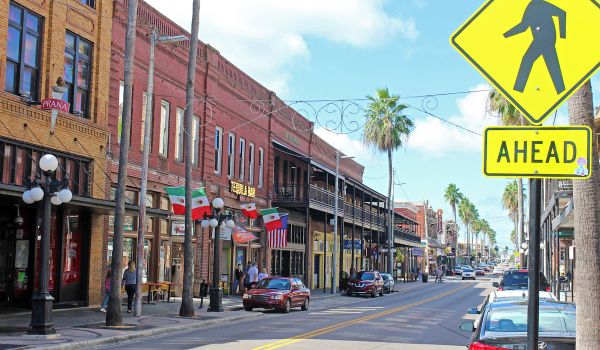Wells Fargo Denied More Than Half of Refinancing Applications From Black Homeowners
A Bloomberg investigation found that Wells Fargo had approved refinanced mortgages for only 47% of Black homeowners who applied in 2020, compared to 72% of White homeowners. Following the federal reserve’s lowering of interest rates in 2020, many homeowners refinanced their homes to pay lower interest rates on their mortgages, but the disparity between who applied and who was granted these lower interest rates increased the country’s already cavernous racial wealth gap. According to Bloomberg’s look at federal data, the racial wealth gap between White and Black Americans increased by a mind-boggling $20 trillion during the pandemic.
While every bank that the outlet looked into had higher rates of refinancing for White than Black borrowers, Wells Fargo had by far the largest gap. At JPMorgan Chase & Co., for instance, 81% of refinancing applications were approved for Black borrowers and 90% for White borrowers. The disparity is not the result of income: across the industry, high-income Black applicants had approval rates about the same as low-income White applicants. Wells Fargo has long been scandal-plagued, paying $184 million to the federal government in 2012 as a result of predatory lending practices, and in 2020 payed $3 billion after opening 3.5 million checking and credit accounts without customer authorization. In 2017, the city of Philadelphia sued Wells Fargo for steering Black homeowners into predatory, high-interest loans.
Redlined Neighborhoods Are Facing the Brunt of the Climate Crisis
A report recently published in the journal Climate found that neighborhoods that were racially redlined in the early twentieth century are now hotter, have poorer air quality and that residents are at more risk of climate death. In the early to mid twentieth century, the federal government mapped neighborhoods with a higher concentration of Black residents and refused to back private bank mortgages in those neighborhoods, claiming the mortgages were too risky. The practice became illegal with the passage of the 1968 Fair Housing Act. The study looked at 108 urban areas across the country, finding that 94% of them showed hotter temperatures in formerly redlined neighborhoods, an average of 5 degrees fahrenheit. Because racial redlining marked low-income Black neighborhoods as “risky” for real estate investment, these areas have “fewer environmental amenities that help to clean and cool the air, including urban tree canopy,” the report hypothesizes. More significantly, federal highways were built through low-income Black neighborhoods in the 1950’s, leading to higher temperatures due to the heat-capture property of asphalt and poorer air quality from car exhaust. Additionally, “throughout the mid-1900s large building complexes, including housing complexes, industries, and university campuses, often subsidized by the federal government, were also placed in redlined areas, largely due to the inexpensive land,” and these buildings were built from dense materials like concrete that captured more heat, the study found.
In California, the state is attempting to add green amenities to low-income neighborhoods using cap and trade dollars, but is dealing with the flipside of disinvestment: when those resources arrive, displacement can follow. Last month I wrote about anti-eviction organizers in Oakland assigned to stem displacement using those same cap and trade dollars.
Unhoused New Yorkers Face Increased Safety Concerns
A man accused of a multi-state killing spree of unhoused people was arrested in D.C. on Tuesday. The 30-year-old suspect is accused of injuring two people and killing one person in D.C. earlier this month before traveling to N.Y.C. where he allegedly killed another unhoused person and shot another person in the shoulder. The N.Y.C. shootings brought renewed scrutiny to Mayor Eric Adams’ policy of removing unsheltered New Yorkers from the subway rather than allowing them to shelter there overnight. Advocates say the measures are more likely to leave New Yorkers to sleep in the street to avoid the violence, risk of theft and restrictions of the shelter system. But street homelessness also exposes New Yorkers to danger, as exemplified by this month’s shooting spree, a murder of a man sleeping in a stairwell in November, and the murders of four men in 2019.
“If the shelter system was safe for them, it’d be a different story, but it’s not,” Maria Walles, a formerly unsheltered New Yorker told NY1. “We need a stop to the policing that’s been occurring both on the subways and on the streets where people have been approached by the police with no real help,” Helen Strom, with the nonprofit Safety Net Project said in the same interview.
Gothamist interviewed unhoused New Yorkers about the recent killings, all of whom said they still found the streets to be safer than the shelter system overall. VOCAL-NY, Open Hearts Initiative and Housing Works held a rally earlier this week to call for more resources in the wake of the violent shootings, including reopening the city’s single hotel program for people experiencing homelessness.
2021 was the deadliest year on record for New Yorkers experiencing homelessness, with 640 unhoused people dying across the city, according to City Limits. The uptick was driven by opioid overdoses, but unhoused people also died from heart diseases, accidents and alcohol misuse. The data also show that 22 unhoused New Yorkers were murdered last year, up from 10 in 2019. 16 unhoused people also died from extreme cold in 2021 — up from four in the previous year — and two died from extreme heat.

Roshan Abraham is Next City's housing correspondent and a former Equitable Cities fellow. He is based in Queens. Follow him on Twitter at @roshantone.
















